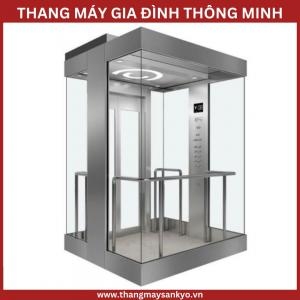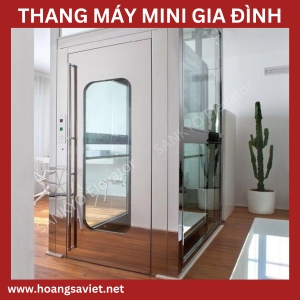The system is processing. Please wait a moment!
- Home Sankyo Elevator Products Home Elevator. New Price 2024!
Pitless Manual Door Elevator
TABLE OF CONTENTS
- Manual elevator structure
- Working principle of manual door opening home elevator
- Learn about the safety features of manual elevators
- Comparison of manual elevator and automatic elevator
- Which buildings can manual door elevators be installed for?
- How much does a manual door elevator cost now?
- Refer to the manual door elevator size
- Unit selling and installing safe and reputable manual door elevators
For many people who are familiar with automatic door elevators, approaching a manual door elevator will bring a completely new experience. Manual door elevators are specially designed with doors similar to normal room doors, using hinges to open and close manually. When entering or exiting the cabin, users will manually open the door, creating a clear difference compared to automatic door elevators. However, to ensure maximum safety, manual door elevators only operate when the door is completely closed. This not only helps protect users throughout the journey but also maintains stable performance of the system. With a unique design and special features, manual door elevators are an ideal choice for projects that require high flexibility or limited space, while bringing convenience and a new style to users.
SEE MORE ARTICLES
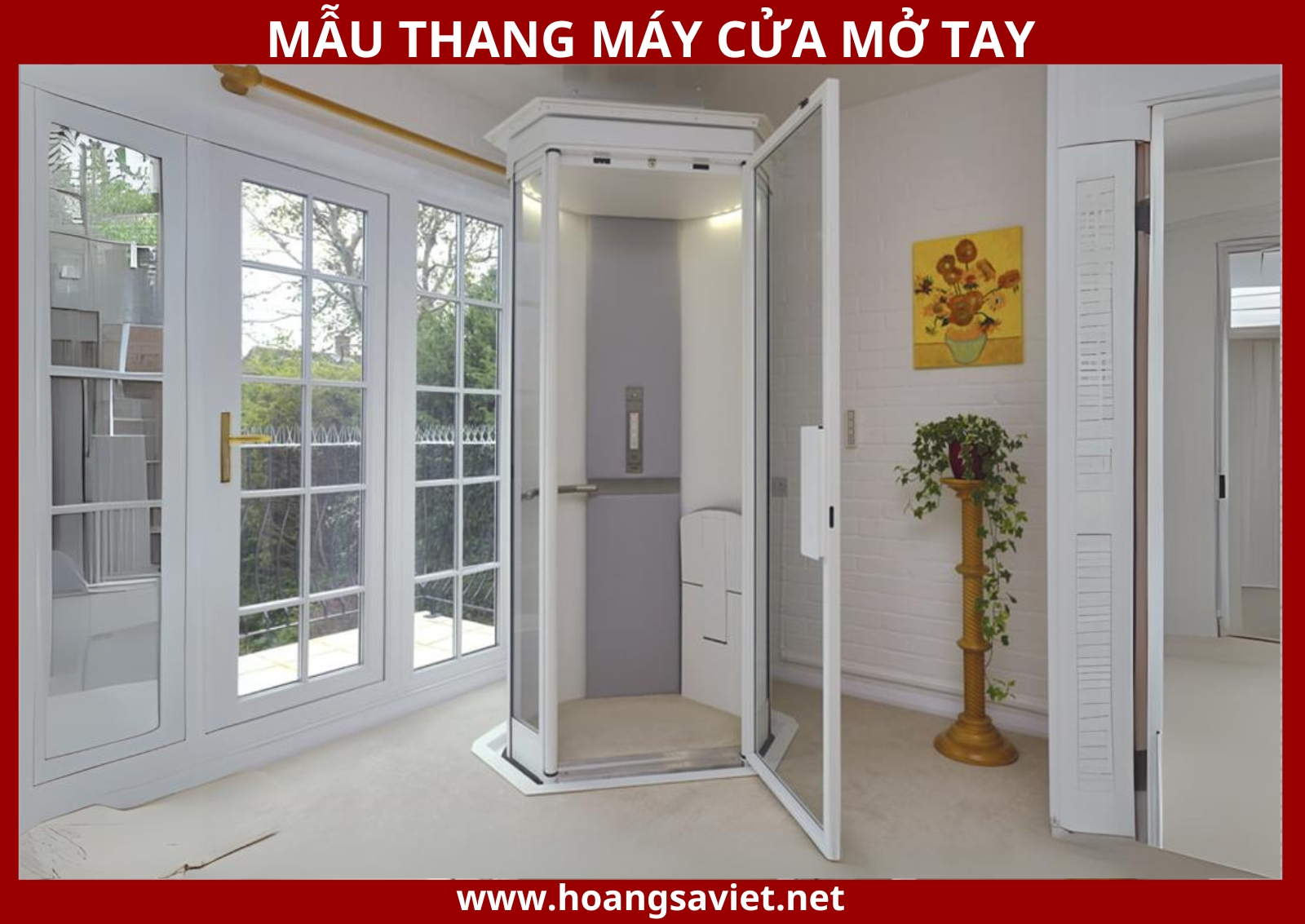
Manual door elevators , although bringing a new and unique experience in use, actually have a long history of development with a familiar operating mechanism in the elevator industry. Over time, the safety technology for this type of elevator has been significantly improved, providing optimal reliability and protection for users. Modern improvements not only focus on improving the performance of the system but also pay special attention to safety, such as integrating modern sensors to control the opening and closing of the door more precisely, ensuring that the elevator only operates when the door is completely closed.
Compared to automatic door elevators, manual door elevators have notable differences in design and operating mechanism. While automatic doors operate through motors and automatic control systems, manual door elevators require manual operation by users, saving installation space and reducing maintenance costs. However, each type has its own advantages, suitable for the specific needs and space of each project.
Let's explore more details about manual door elevators with Hoang Sa Viet Sankyo, from the history of development to the advanced technologies applied, through the article below to better understand this unique type of elevator and find the most suitable solution for your space.
1. STRUCTURE OF MANUAL DOOR ELEVATOR
Structurally, manual door elevators are significantly simpler in design than automatic door elevators, giving the impression of a regular room door at first glance. This is what makes many consumers concerned about the safety of this type of elevator. However, the fact is that manual door elevators are fully equipped with modern safety components, ensuring compliance with strict standards in the elevator industry. These components not only enhance safety but also help this type of elevator operate stably and reliably in all conditions of use. Below are the main components that make up the manual door elevator cabin door:
-
Door : This is an important part, often made from sturdy materials such as stainless steel framed glass or powder coated steel. These materials not only ensure durability but also bring high aesthetics, suitable for many different interior design styles.
-
Hinge system : Designed to connect the door to the cabin frame, the hinge system not only withstands force but also ensures the door operates smoothly during use.
-
Safety contact : This is an important device that helps control the operation of the elevator. Only when the door is completely closed can the elevator operate, thereby eliminating the risk of accidents due to the door not being closed tightly.
-
Safety latch : The safety latch acts to prevent the floor door from opening from the outside if the car does not stop at the correct position at that floor. This helps to minimize the risk of people or objects accidentally falling into the elevator shaft.
-
Infrared Curtain : To enhance safety, an infrared curtain system is integrated to detect any obstructions crossing the elevator door. When an obstruction is detected, the elevator will immediately send out a warning signal and will not move until the obstruction is removed. There are two main types of infrared curtains, including a two-beam design and a curtain along the length of the door, providing optimal protection for users.
Thanks to the integration of these components, the manual door elevator is not only a minimalist design but also brings peace of mind to users, affirming reliability and quality in modern constructions.
SEE MORE ARTICLES
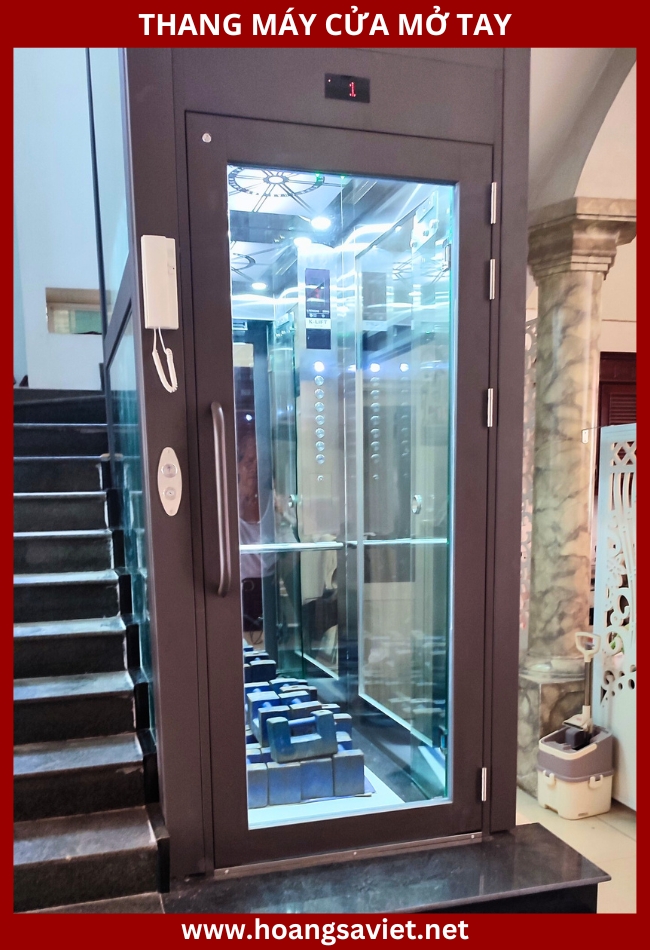
The operation process of a manual elevator includes a series of simple steps but requires direct interaction from the user, creating a clear difference compared to an automatic elevator. Below are the specific steps in the operation of this type of elevator:
First, the user starts by pressing the elevator call button at the desired floor door. This is the basic step to send a signal requesting the cabin to move to the current floor position. When the cabin reaches the floor, instead of the door opening automatically like in modern elevators, the user needs to actively open the floor door manually to prepare to step inside. This design brings novelty but also requires the user to perform the operation carefully.
After entering the cabin, the user continues to close the landing door manually, ensuring that the door is closed tightly in preparation for the move. Next, the inner cabin door also needs to be completely closed. This is an important factor for the system to confirm safety before starting the trip.
SEE MORE ARTICLES
Once ready, the user selects the desired floor via the control panel inside the cabin. This selection activates the system, allowing the elevator to move to the required location accurately and safely.
When reaching the destination floor, the cabin will stop at the desired position. At this time, the user opens the cabin door, then opens the floor door manually to step out. Finally, to complete the usage process, the user needs to ensure that both the cabin door and the floor door are closed properly, maintaining the state of readiness for the next use.
This process not only emphasizes the direct interaction of the user but also requires caution in every operation. Thanks to that, the manual door elevator ensures maximum safety for the user, while providing a unique and flexible experience in modern construction works.
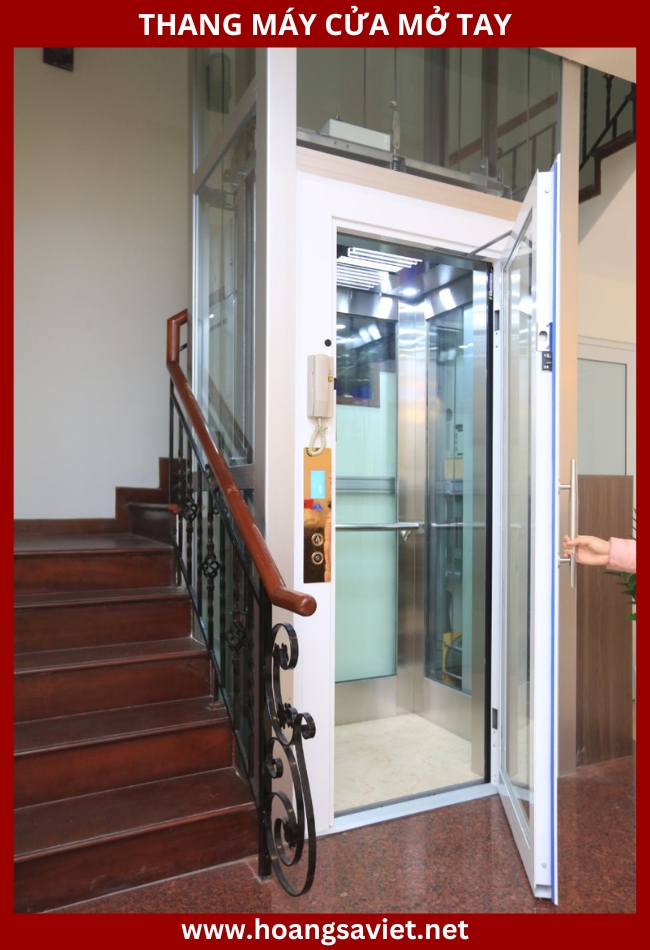
SEE MORE PRODUCTS:
2. OPERATING PRINCIPLE OF MANUAL DOOR OPENING HOME ELEVATOR
Manual elevators operate on the basic principle of electric elevators, with the electric motor installed at the top of the elevator shaft, playing the main role in providing the force to lift and lower the cabin. The structure of this elevator includes a counterweight system, which helps maintain perfect balance between the cabin and the load during the movement. This not only reduces the pressure on the motor but also contributes to improving operating efficiency and prolonging the life of the equipment.
Normally, modern electric elevators are often equipped with automatic door opening systems, with two-sided opening or one-sided sliding opening mechanisms, making use convenient and quick. However, in some special cases, when the elevator pit space is limited and there is not enough space to design traditional opening doors, the solution of using manual opening doors becomes the optimal choice. This is a flexible solution, not only helping to save space but also suitable for projects with special requirements on architecture or space renovation.
Although the design and operating mechanism are simpler than automatic doors, manual door elevators still ensure safety standards and reliability in use. The integration of manual doors not only solves the problem of space but also brings a unique change in user experience, especially in projects that require high flexibility or have special architecture. This makes manual door elevators increasingly become a popular solution in many construction projects today.
SEE MORE ARTICLES
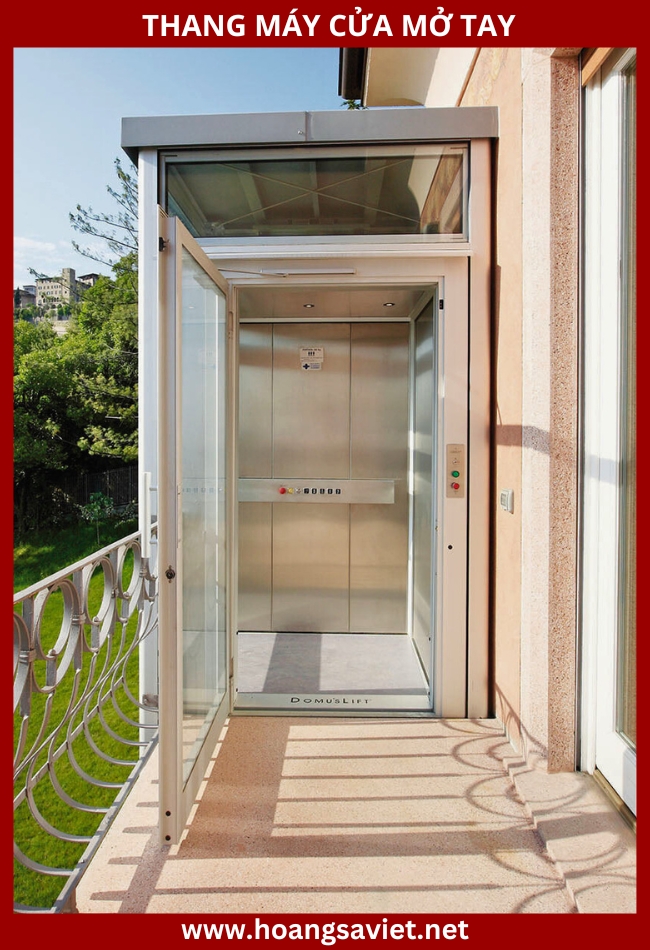
The manual doors of the elevator are designed to be tightly attached to the elevator shaft frame, operating on a manual opening mechanism similar to conventional interior doors. This type of door not only brings simplicity and convenience but also optimizes the usable space, especially suitable for projects with limited area or special renovation requirements. However, with such a different design, a question often asked is whether the manual door elevator can ensure absolute safety for users?
The answer lies in the fact that the safety systems of manual elevators are designed and tightly integrated to meet the highest standards. Each manual elevator is equipped with modern safety mechanisms, ensuring that all door opening and closing operations must comply with the correct operating procedures. Specifically, the safety contact system only allows the elevator to operate when the door is completely closed, eliminating the risk of the cabin moving when the door is not closed. In addition, the safety latch ensures that the floor door can only be opened when the cabin has stopped in the correct position, avoiding risky situations such as users or objects falling into the elevator shaft.
SEE MORE ARTICLES
In addition, additional safety features such as infrared curtains are installed to detect obstacles in the elevator door area, helping to prevent unexpected incidents. This system will automatically warn and stop the elevator from moving if any obstacles are detected. All of these factors combine to create a comprehensive safety system, providing absolute peace of mind for users when using manual elevators . With investment in technology and design, this type of elevator not only ensures safety but is also an ideal choice for many modern projects.
3. UNDERSTAND THE SAFETY MODES OF MANUAL DOOR ELEVATORS
One of the top criteria to ensure the safety of manual elevators is to design a tight operating system, in which the floor doors are always closed when the elevator is operating. This is an important factor to completely eliminate the risk of accidents due to improperly closed doors, especially when the elevator cabin is moving between floors.
Furthermore, when the cabin does not stop at a specific floor, the elevator safety system will prevent the door from opening at that location. This ensures that no one can accidentally open the door when the cabin is not in the correct position, minimizing risks such as slipping or falling into the elevator shaft.
In addition, the elevator door is equipped with modern infrared sensor technology, providing an additional layer of protection for users. This sensor is capable of detecting any object entering the elevator door area. When an obstacle is detected, the elevator will immediately stop operating to ensure that there is no collision or risk of injury to the user. This is an advanced safety feature, in accordance with the strict requirements in elevator operation.
SEE MORE ARTICLES
In addition, the moving speed of the manual elevator is also designed to be low, only from 18 meters/minute to 24 meters/minute. This speed not only brings a smooth feeling of movement but also ensures greater safety for users, especially for children and the elderly. With the combination of strict safety standards and modern technology, the manual elevator becomes an ideal solution, bringing peace of mind and maximum safety to every project.
Below are some illustrations of manual door elevators:
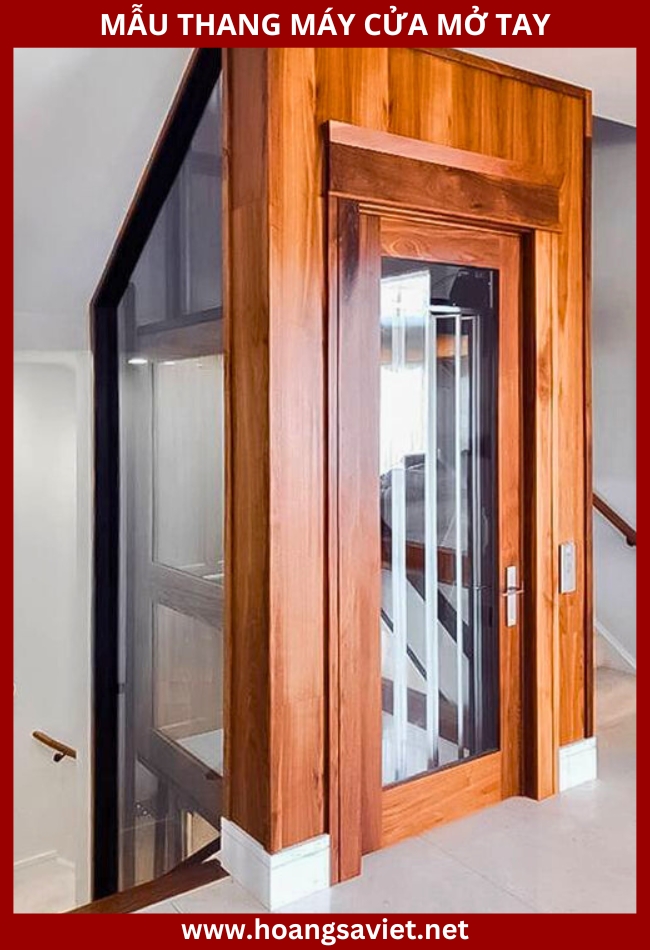
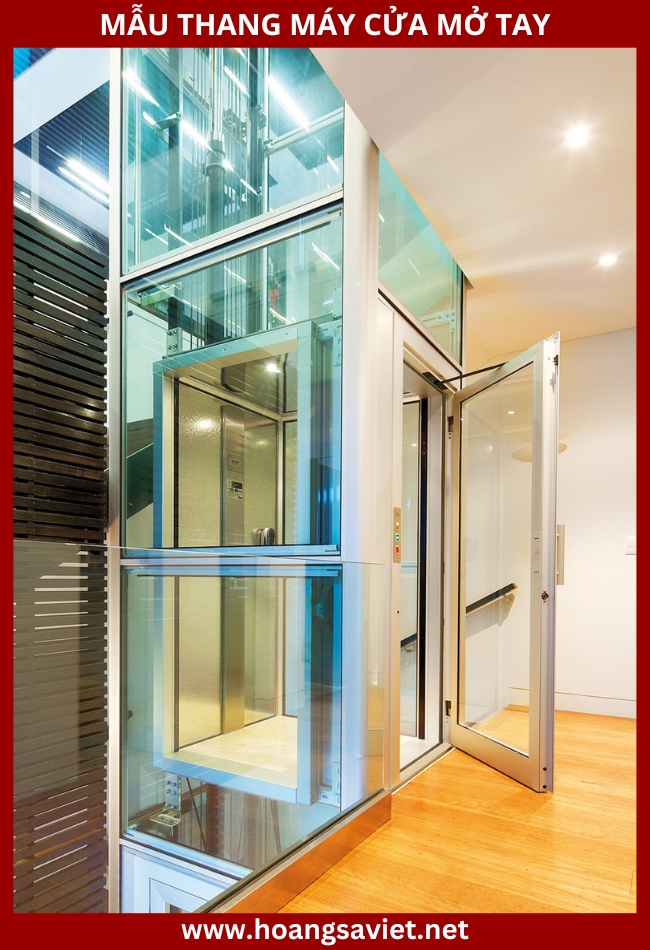
SEE MORE PRODUCTS:
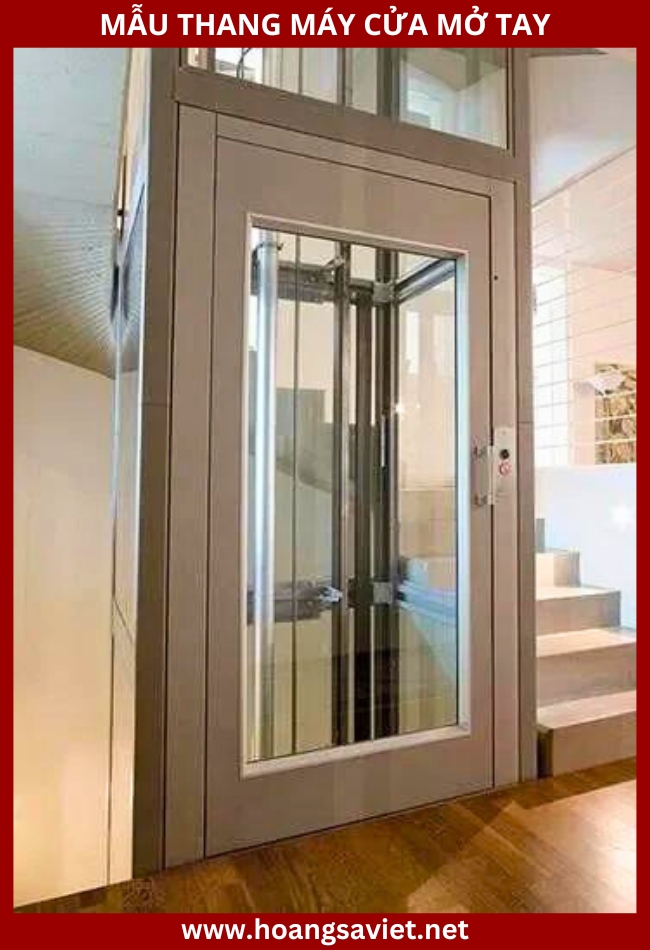
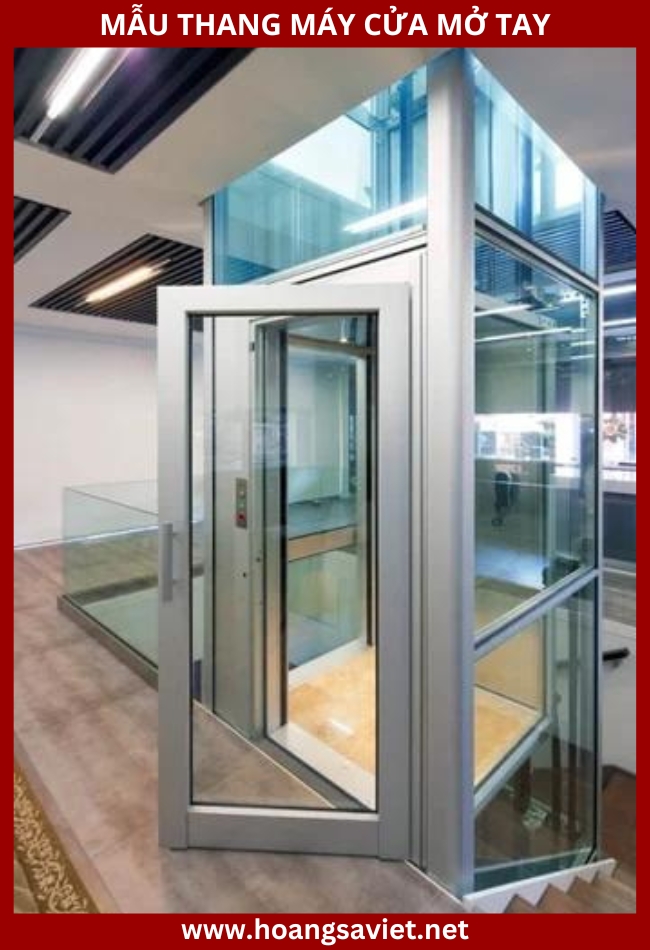
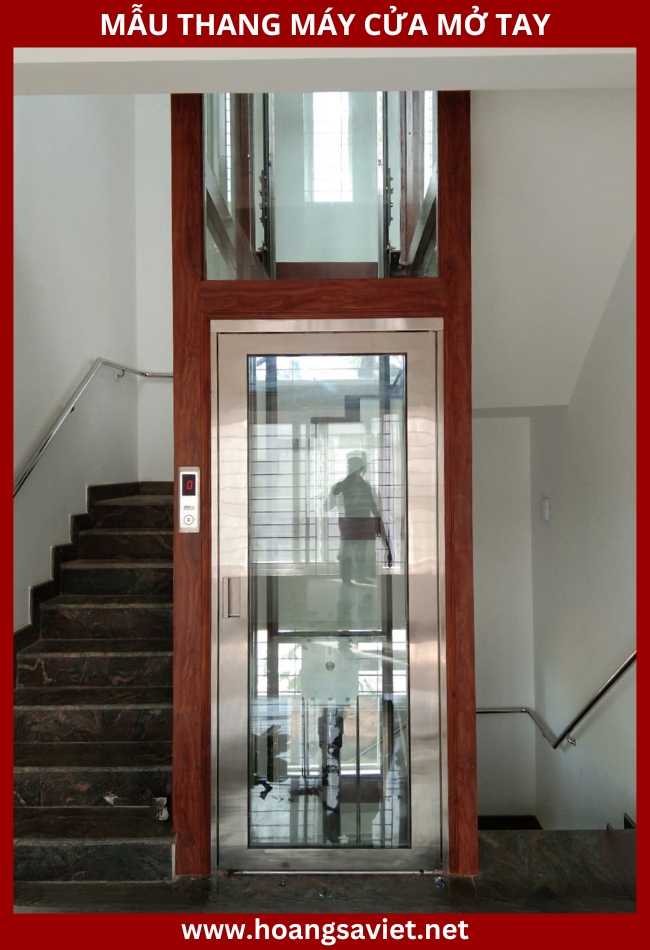
SEE MORE PRODUCTS:
4. COMPARISON OF MANUAL DOOR ELEVATORS AND AUTOMATIC ELEVATORS
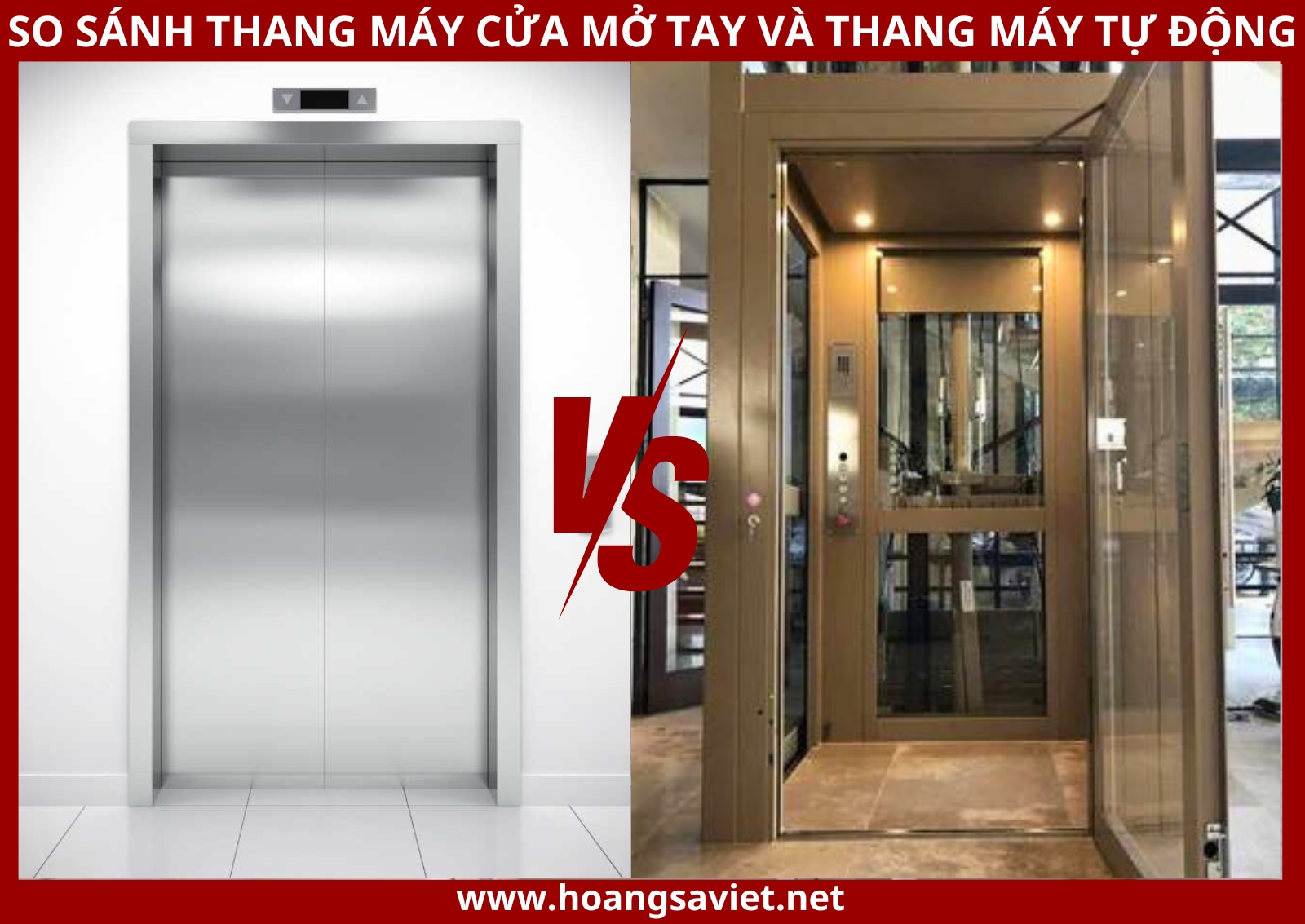
Based on the structure and operating mechanism, elevators are currently divided into two main types: manual door elevators and automatic door elevators. Each type has its own advantages and limitations, suitable for different needs and conditions of use. Manual door elevators stand out with their simple design, often do not require a large area and are suitable for renovation projects or narrow spaces. Meanwhile, automatic door elevators bring more convenience and modernity thanks to their automatic opening and closing mechanism, especially suitable for large projects or those requiring high professionalism.
Choosing between these two types of elevators depends on many factors such as installation space, intended use and investment budget. A detailed comparison of the characteristics, features and costs will help you better understand each type of elevator, thereby making the most appropriate decision for your home or project. With this information, you can not only choose the elevator that is optimal in terms of function but also ensure aesthetic factors and long-term efficiency in use.
|
Compare |
Manual door elevator |
Automatic elevator |
|
Alike |
Intended use: Compact design, often installed in homes to optimize movement.
Safety System Structure: Both types of elevators incorporate safety devices to ensure user safety. This includes: - Speed limiter: Used to control the speed of the elevator, avoiding operation at excessive speed, creating a safe environment for users. - Automatic rescue system in emergency situations. - Safety latch system: Ensures that the door only opens at a specific floor when the cabin stops there, enhancing user safety. Elevator price: Elevators with automatic doors are usually more expensive than elevators with manual doors. However, the installation, maintenance and upkeep costs between the two types of elevators are similar. |
|
|
Different |
||
|
Elevator door drive system |
Do not have |
Have |
|
Elevator door material |
Aluminum or steel |
Solid stainless steel or stainless steel framed glass |
|
How to use |
Use your hands to open the elevator door directly when using. |
The elevator door opens automatically when the user uses it. |
|
Elevator speed (m/s) |
0.15 – 0.25 |
0.4 |
|
Pit area requirements |
Small, suitable for renovated houses, houses with small area |
Wide, suitable for large houses and villas. |
SEE MORE PRODUCTS:
5. WHICH PROJECTS CAN MANUAL DOOR ELEVATORS BE INSTALLED?
Manual home elevators are ideal for special projects where installation space is limited or where flexible integration with existing design is required. For family homes that are being renovated, manual elevators are superior due to their ability to adapt to small elevator shaft sizes, which automatic elevators are difficult to meet. Spaces such as skylights are often fully utilized to install this type of elevator, providing convenience without affecting the structure of the house.
SEE MORE ARTICLES
In villa or townhouse projects without existing elevator shafts, manual elevators offer a flexible solution that can be easily integrated into existing architecture without requiring major changes in design. This type of elevator is especially suitable for projects that need to maintain the aesthetic beauty of the space.
For newly built houses with limited area, optimizing space is always the top priority. The compact hand-operated home elevator is the perfect choice, ensuring both indoor transportation and significant space savings. This type of elevator not only meets the needs of use but also contributes to creating harmony in the overall architecture, bringing comfort and modernity to the family's living space.
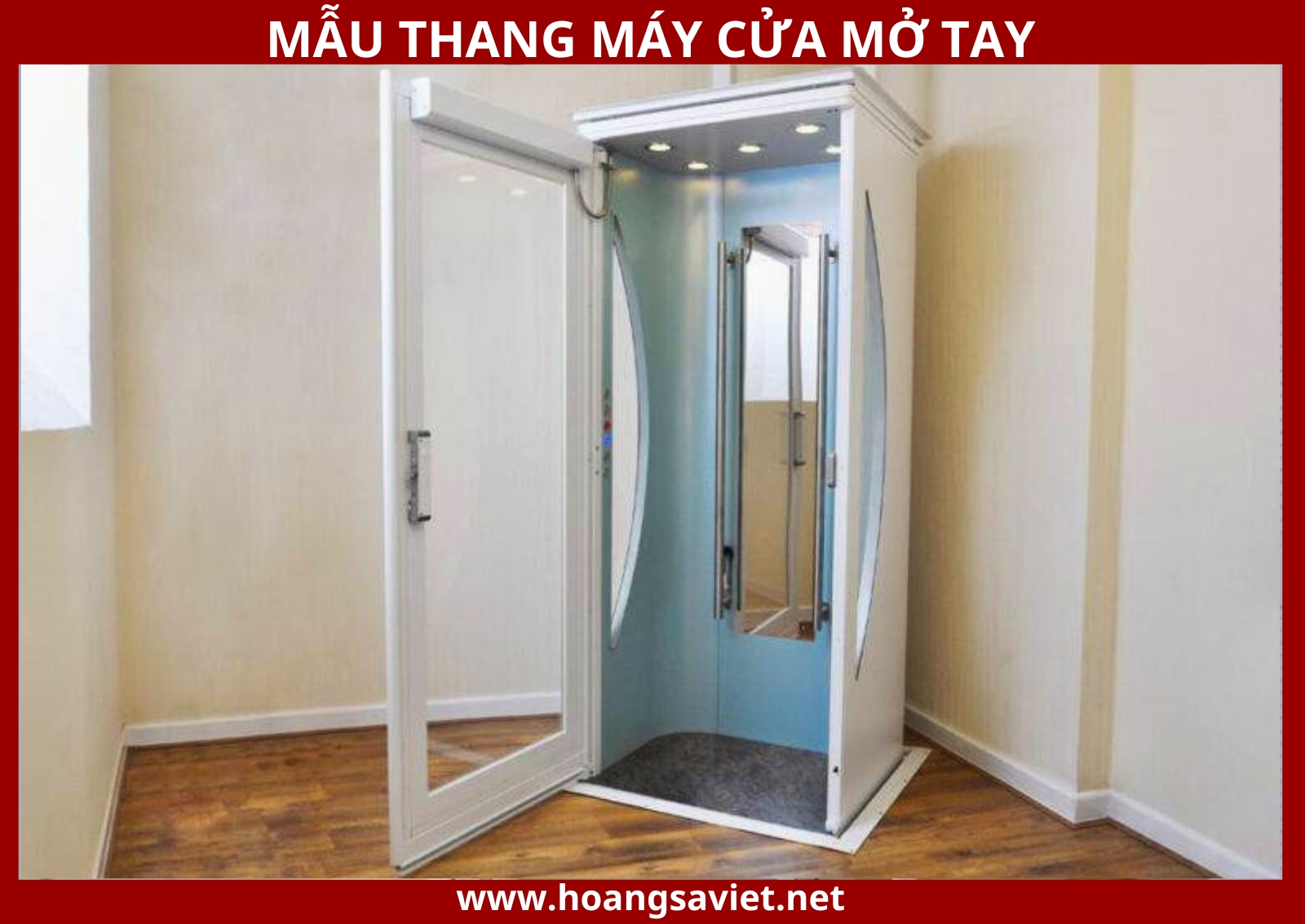
SEE MORE PRODUCTS:
6. HOW MUCH DOES A MANUAL DOOR ELEVATOR COST NOW?
The price of manual elevators, like other types of elevators, varies significantly depending on the origin, brand, and technical characteristics of the product. Manual elevators have many options in design and quality, from basic lines suitable for moderate budgets to high-end lines integrating modern technology. The usual price can range from 700 million VND to 2 billion VND, depending on factors such as load capacity, materials, safety systems, as well as installation and maintenance costs.
SEE MORE ARTICLES
To ensure the right product selection that suits your needs and budget, customers should carefully research information from reputable elevator suppliers and installers. Receiving direct advice will help you better understand the costs, product features, as well as accompanying services such as warranty, periodic maintenance and technical support. If you are considering installing a manual home elevator , please contact a professional company in the elevator industry directly to get your questions answered and receive the most accurate and detailed quote.
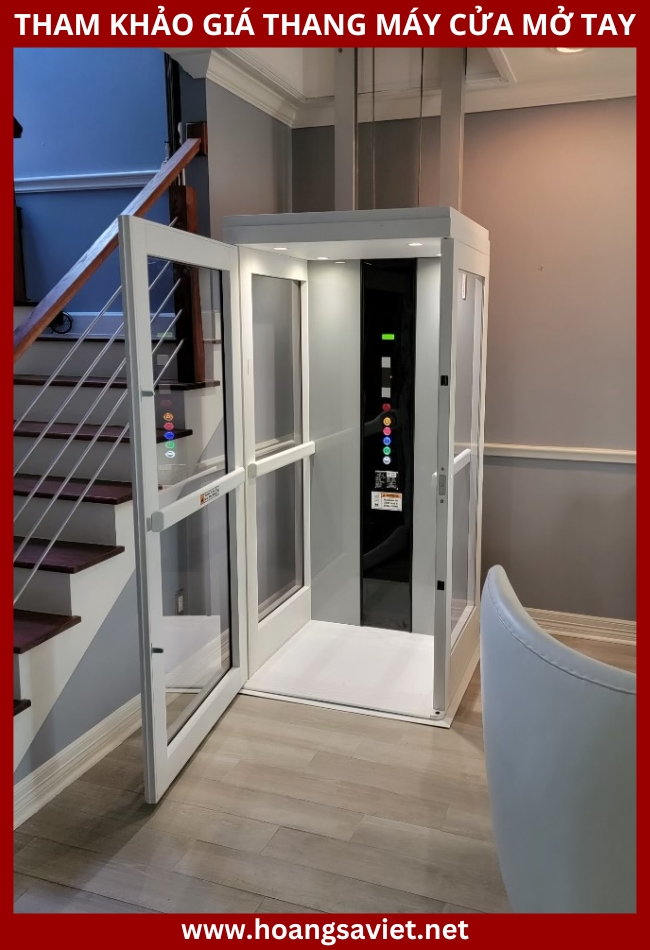
7. REFERENCE SIZE OF MANUAL OPEN DOOR ELEVATOR
When choosing a manual elevator , an important factor to consider is the size of the elevator shaft and the elevator. Compared to automatic elevators, manual elevators offer more flexibility in size and space. Specifically, with a minimum elevator shaft width of 850mm, you can install a 600mm wide elevator cabin and a 600mm wide manual door. This is a great advantage, especially when the elevator shaft space is limited or there is not enough space to install an elevator with an automatic door. This type of elevator is suitable for projects with narrow spaces, renovated houses or projects without available elevator shafts, helping to optimize space while still ensuring effective use.
Compared to automatic door elevators, manual doors do not require a large elevator shaft, so construction and installation are easier, saving costs and time. In addition, manual door elevators with hinged doors designed like interior doors will be the perfect choice for houses or buildings that need to optimize space without digging or breaking the existing structure.
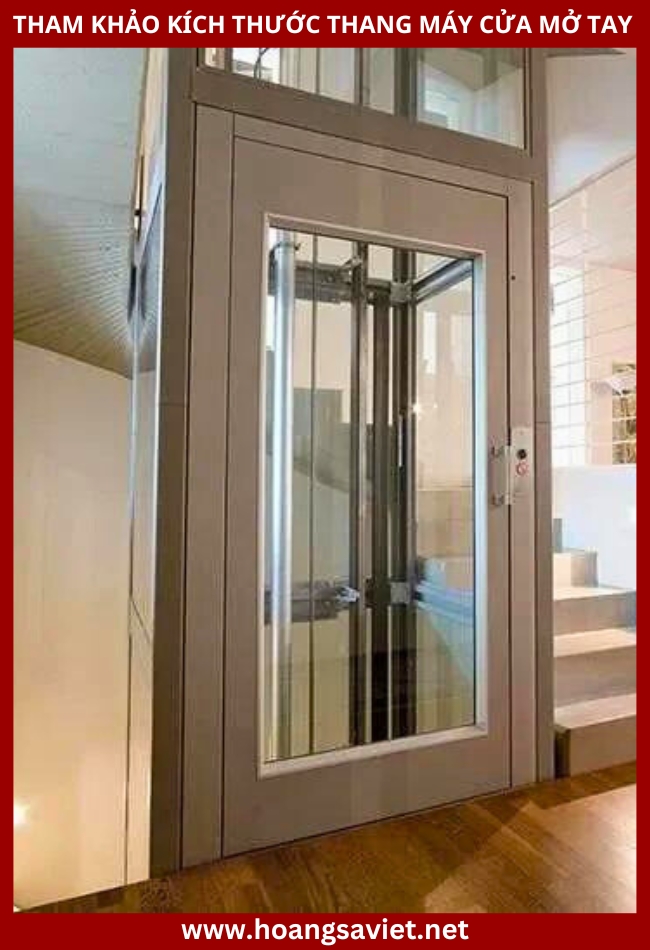
8. REPUTABLE AND SAFE UNIT FOR SELLING AND INSTALLING ELEVATORS WITH HAND OPEN DOORS
Currently, there are many units supplying and installing glass elevators on the market, but not all are reliable and ensure quality. Therefore, choosing a reputable and quality unit to carry out the project is very important. One of the reliable addresses that you cannot ignore when you need to install a family glass elevator is Hoang Sa Viet SANKYO Elevator . This is a unit highly appreciated by many customers thanks to its quality factors and professional service.
The reason to choose Hoang Sa Viet SANKYO Elevator is because the company is committed to providing 100% genuine glass elevator products, with clear origin and source, helping to ensure long-term safety and efficiency for your project. The company's installation team are experienced experts, dedicated and meticulous in every stage, ensuring that the elevator is installed properly, operates safely and stably.
SEE MORE ARTICLES
In addition, Hoang Sa Viet SANKYO Elevator also provides consulting services and clear, detailed glass elevator quotes, with tight and reasonable project estimates. The company also provides transparent warranty and maintenance policies, ensuring that customers always receive support when needed. The working process at Hoang Sa Viet SANKYO Elevator is very scientific, clear and fast, from consulting, installation to after-sales, bringing maximum satisfaction to customers. In particular, the consulting staff is always enthusiastic, professional, ready to answer all questions and help you choose the right glass elevator for your family or business needs.
With all these advantages, Hoang Sa Viet SANKYO Elevator is the ideal choice for those who are looking for a reputable and quality address to install a family glass elevator. If you need to install an elevator for your family or business, please contact Hoang Sa Viet SANKYO Elevator immediately for detailed advice and support, helping you choose the right product and have a perfect elevator installation project.
“Hoang Sa Viet Elevator - Always with you on every floor!”
SEE MORE PRODUCTS:
HOANG SA VIET ELEVATOR - THE LEADING PRESTIGIOUS ELEVATOR COMPANY IN VIETNAM
Consultant: 0779.025.789 Office Headquarters: 184/20 Le Dinh Can, Tan Tao Ward, Ho Chi Minh City Hanoi Headquarters: No. 229, Van Tri Street, Van Noi, Dong Anh, Hanoi Website: hoangsaviet.net Email: hungpham@hoangsaviet.com
Hiện chưa có đánh giá nào về sản phẩm này!



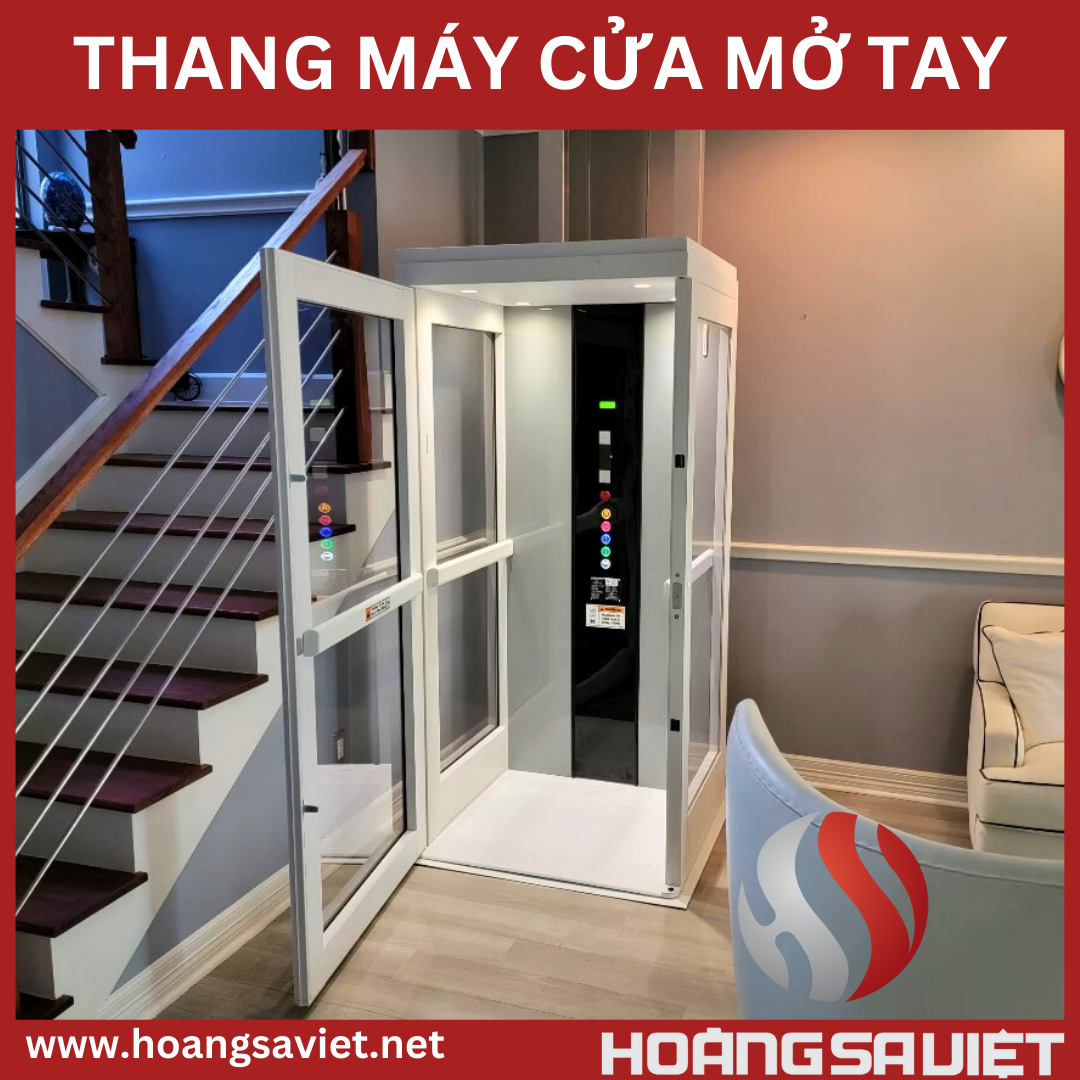
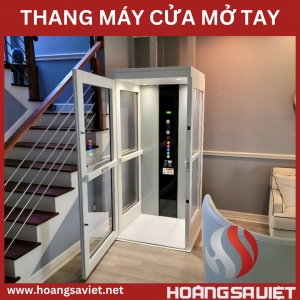
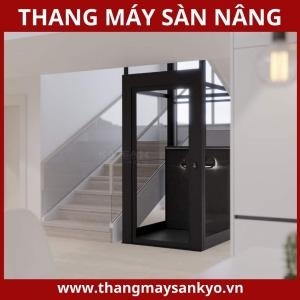

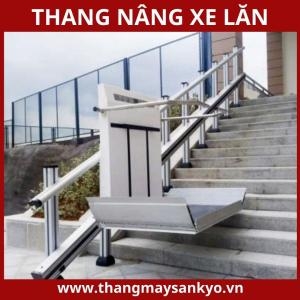

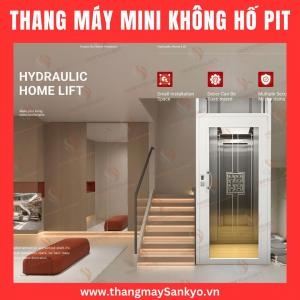

.png)
.png)

.png)
